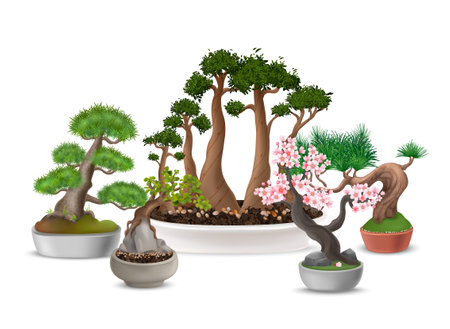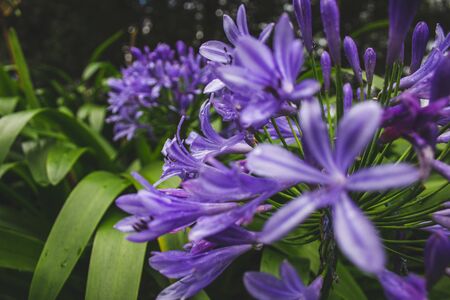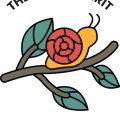Introduction to Native Plant Landscaping
Native plant landscaping is a growing trend across the United States, and for good reason. It involves using plants that naturally occur in your region, making them well-suited to local climate, soil, and wildlife. This approach to gardening doesn’t just make your yard look beautiful—it also supports the environment and saves you time and money in the long run.
What Are Native Plants?
Native plants are species that have evolved and adapted to a specific region over thousands of years. They thrive in the natural conditions of their native area without needing extra care like fertilizers or frequent watering. In contrast, non-native or exotic plants often require more resources and can sometimes harm local ecosystems.
Benefits of Native Plant Landscaping
There are many reasons why homeowners across America are choosing native plants for their yards. Here’s a quick look at some of the key benefits:
| Benefit | Description |
|---|---|
| Environmental Impact | Supports local pollinators like bees, butterflies, and birds; promotes biodiversity; reduces invasive species. |
| Low Maintenance | Less need for mowing, pruning, or pest control; native plants are adapted to local conditions and generally more resilient. |
| Water Conservation | Requires less irrigation since native plants are accustomed to the local rainfall patterns. |
| Cost Savings | Saves money on water bills, fertilizers, pesticides, and lawn equipment fuel or maintenance. |
Why This Matters for American Yards
Across different regions in the U.S.—from the deserts of Arizona to the forests of New England—native plants offer unique advantages tailored to each climate zone. Whether youre dealing with drought, heavy rain, or cold winters, theres likely a native plant that fits your yards needs perfectly. Plus, using native plants helps preserve Americas rich ecological heritage while creating a beautiful and functional outdoor space.
A Smart Choice for Homeowners
If you’re looking for a sustainable way to landscape that’s both attractive and eco-friendly, native plant landscaping is a smart choice. It blends beauty with function while giving back to your local environment—making your yard not only a personal haven but also part of something bigger.
2. Choosing the Right Native Plants for Your Region
When it comes to native plant landscaping, one size definitely doesnt fit all. The United States is home to a wide variety of climates, ecosystems, and soil types, which means choosing the right native plants for your specific region is key to creating a healthy, low-maintenance yard. Below, we’ll walk you through how to select native species that are best suited to your area by understanding your USDA hardiness zone, local climate, and soil conditions.
Understanding Your USDA Hardiness Zone
The USDA Plant Hardiness Zone Map divides North America into 13 zones based on the average annual minimum winter temperature. Knowing your zone helps you choose plants that can survive winter in your area. For example, if you live in Zone 5 (like parts of Illinois or Colorado), youll want plants that can tolerate temperatures as low as -20°F to -10°F.
USDA Hardiness Zones Overview
| Zone | Minimum Temperature (°F) | Example Regions |
|---|---|---|
| 3 | -40 to -30 | Northern Minnesota, Alaska |
| 5 | -20 to -10 | Midwest (parts of IL, CO) |
| 7 | 0 to 10 | Southeast (VA, TN) |
| 9 | 20 to 30 | Southern California, Texas Gulf Coast |
Consider Your Local Climate and Rainfall
Your local climate plays a big role in plant health. Native plants are adapted to the natural rainfall patterns of their regions. For example, drought-tolerant natives like California poppies or sagebrush thrive in dry areas like the Southwest. On the other hand, if you live in the Pacific Northwest where it rains often, look for moisture-loving natives like sword fern or red-flowering currant.
Know Your Soil Type
The type of soil in your yard—whether its sandy, clay-heavy, loamy, or rocky—affects how well certain plants will grow. Some native species prefer fast-draining sandy soils while others do better in rich loam or dense clay. You can test your soil using a home testing kit or send a sample to a local extension service for analysis.
Common Soil Types and Matching Native Plants
| Soil Type | Description | Ideal Native Plants |
|---|---|---|
| Sandy | Fast-draining, low in nutrients | Purple coneflower, butterfly milkweed |
| Clay | Dense, slow-draining | Switchgrass, blue flag iris |
| Loamy | Balanced texture and nutrients | Black-eyed Susan, blazing star |
| Rocky | Poor water retention but well-aerated | Prairie smoke, western wallflower |
Use Local Resources for Plant Selection Help
If youre unsure where to start, consult your local native plant society or cooperative extension office. Many offer regional plant lists and guides that make choosing native species much easier. You can also visit nearby nature preserves or botanical gardens to see what grows naturally in your area.
Quick Tips:
- Select at least one plant for each season to maintain year-round interest.
- Aim for a mix of grasses, shrubs, flowers, and trees for diversity.
- Avoid cultivars labeled “nativars” if youre aiming for ecological benefits—they may not support local wildlife the same way true natives do.
Selecting the right native plants based on your region’s unique characteristics is the foundation for a successful landscape. With just a bit of research into your zone, climate, and soil type, you’ll be on your way to a beautiful and resilient garden that supports local biodiversity.

3. Design Principles for Native Plant Gardens
Designing a native plant garden is more than just choosing the right plants—its about creating a space that is both beautiful and beneficial to the local ecosystem. By following a few simple design principles, you can create a yard that thrives naturally and supports birds, pollinators, and other wildlife.
Plan Your Layout with Purpose
Start by evaluating your yards conditions: sun exposure, soil type, drainage, and existing vegetation. Group plants according to their needs and how they’ll grow over time. This helps reduce maintenance and keeps your garden looking tidy.
Common Layout Strategies
| Strategy | Description |
|---|---|
| Layered Planting | Arrange plants in tiers—tall in back, medium in middle, short in front—for depth and structure. |
| Drift Planting | Use repeating clusters of the same species for a natural look and visual unity. |
| Island Beds | Create standalone beds surrounded by lawn or mulch for easy access and strong visual impact. |
| Border Gardens | Line fences or pathways with native plants to frame your yard and guide movement. |
Use Companion Planting for Healthy Growth
Certain native plants grow better when paired together. Companion planting enhances biodiversity, discourages pests, and supports mutual growth.
Native Companion Planting Examples
| Main Plant | Companion Plants | Benefits |
|---|---|---|
| Purple Coneflower (Echinacea purpurea) | Black-eyed Susan, Butterfly Weed | Attracts pollinators; staggered bloom times extend interest. |
| Lupine (Lupinus perennis) | Baptisia, Wild Indigo | Adds nitrogen to soil; supports butterflies. |
| Smooth Aster (Symphyotrichum laeve) | Goldenrod, Little Bluestem Grass | Diverse bloom colors; provides late-season food sources. |
Create Visual Appeal Naturally
A native garden can be just as attractive as any formal landscape. Use color, texture, and seasonal changes to keep things interesting year-round. Mix flower shapes, leaf types, and growth habits for contrast and balance. Dont forget focal points like birdbaths, decorative rocks, or even a small bench to invite people into the space.
Tips for Visual Balance:
- Select a color palette: Stick to 2–3 dominant flower colors for harmony.
- Add evergreens or grasses: These offer year-round structure and movement.
- Aim for continuous bloom: Choose plants that flower at different times from spring through fall.
- Edit regularly: Remove overcrowded or underperforming plants to keep the design intentional.
A well-planned native plant garden offers beauty, resilience, and ecological value all in one. With thoughtful design strategies and smart plant pairings, your American yard can become a sustainable sanctuary that thrives season after season.
4. Planting and Maintenance Best Practices
Creating a thriving native plant landscape in your American yard starts with knowing how to properly plant and care for your selections. From preparing your soil to maintaining your garden through the seasons, following these best practices will help your native plants flourish.
Soil Preparation
Healthy soil is the foundation of a successful native garden. Many native plants are adapted to local soil conditions, so its important to understand what kind of soil you have before planting.
Steps for Soil Preparation:
- Test Your Soil: Use a home soil test kit or contact your local extension office to check pH, texture, and nutrient levels.
- Avoid Over-Enriching: Most native plants thrive in natural soils without heavy fertilization.
- Loosen the Soil: Use a shovel or tiller to loosen compacted areas, especially if planting deep-rooted species.
Planting Techniques
The way you plant can make a big difference in how well your native plants establish and grow.
Basic Planting Tips:
- Dig Wide, Not Deep: The hole should be twice as wide as the root ball but no deeper than its height.
- Gently Loosen Roots: If roots are tightly packed, gently tease them apart before planting.
- Backfill with Native Soil: Refill the hole with the same soil you dug out—no need for amendments unless absolutely necessary.
Mulching
Mulch helps retain moisture, suppress weeds, and regulate soil temperature. However, too much mulch can cause problems.
Mulching Guidelines:
- Use Natural Mulch: Shredded bark, leaf litter, or pine needles work well with native landscapes.
- Avoid Volcano Mulching: Keep mulch 2–3 inches away from plant stems or trunks to prevent rot.
- Depth: Apply 2–3 inches of mulch around plants for best results.
Watering Schedules
Natives typically need less water once established, but watering during the first year is critical.
| Status | Watering Frequency |
|---|---|
| Newly Planted (First 2–3 months) | 2–3 times per week |
| This Season (Up to 1 year) | Once per week (more in extreme heat) |
| Mature Plants (After 1 year) | Drought-tolerant; water only during prolonged dry periods |
Seasonal Care
Your native garden will change with the seasons. Regular maintenance keeps it looking great and supports healthy growth year-round.
Caring Through the Seasons:
- Spring: Cut back dead growth from last season; divide crowded perennials if needed.
- Summer: Monitor for pests; keep up with weeding and watering during dry spells.
- Fall: Leave seed heads for birds; avoid heavy pruning to allow overwintering insects shelter.
- Winter: Minimal maintenance needed; enjoy the structure and wildlife activity!
5. Supporting Local Wildlife and Pollinators
One of the most rewarding aspects of native plant landscaping is its ability to support local wildlife, especially pollinators like bees, butterflies, and hummingbirds. These plants have evolved over thousands of years alongside native animals, making them a perfect match for providing food, shelter, and nesting grounds.
Why Native Plants Matter to Wildlife
Unlike non-native species, native plants offer the right kind of nectar, pollen, seeds, and foliage that local animals need to survive. Birds depend on native seeds and berries; caterpillars feed on native leaves; bees collect pollen from flowers they’ve co-evolved with. A yard filled with native plants becomes a vital mini-ecosystem that supports biodiversity right at home.
Common Wildlife Benefited by Native Landscaping
| Wildlife | How Native Plants Help |
|---|---|
| Bees | Provide nectar and pollen from flowering natives like Purple Coneflower and Goldenrod. |
| Butterflies | Caterpillars feed on native host plants such as Milkweed for Monarchs. |
| Birds | Feed on insects supported by native plants, plus berries and seeds from shrubs like Serviceberry. |
| Moths & Bats | Nocturnal pollinators rely on night-blooming natives like Evening Primrose. |
Create a Pollinator-Friendly Yard
You don’t need acres of space to make a difference. Even a small patch of wildflowers can attract dozens of beneficial insects. Here are a few tips to get started:
- Diversify your plantings: Use a mix of flowers that bloom in spring, summer, and fall to provide food throughout the seasons.
- Avoid pesticides: Many chemicals harm beneficial insects and disrupt natural cycles.
- Add water features: A shallow dish with stones can help bees stay hydrated during hot months.
- Create shelter: Leave some leaf litter or install brush piles to give animals places to hide and nest.
Top Native Plants for Pollinators (By Region)
| Region | Recommended Plants |
|---|---|
| Northeast | New England Aster, Joe-Pye Weed, Blue Vervain |
| Southeast | Coneflower, Coral Honeysuckle, Black-eyed Susan |
| Midwest | Purple Prairie Clover, Wild Bergamot, Butterfly Milkweed |
| Southwest | Pineleaf Beardtongue, Desert Marigold, Apache Plume |
| Pacific Northwest | Sword Fern, Red Flowering Currant, Oregon Grape |
The more you include native plants in your landscaping efforts, the more youll notice birds chirping in the morning, butterflies fluttering through your garden, and bees busy at work. Its not just beautiful—it’s essential for a healthy environment right in your own backyard.


